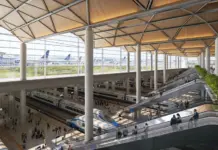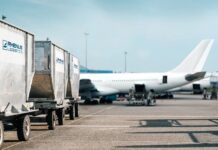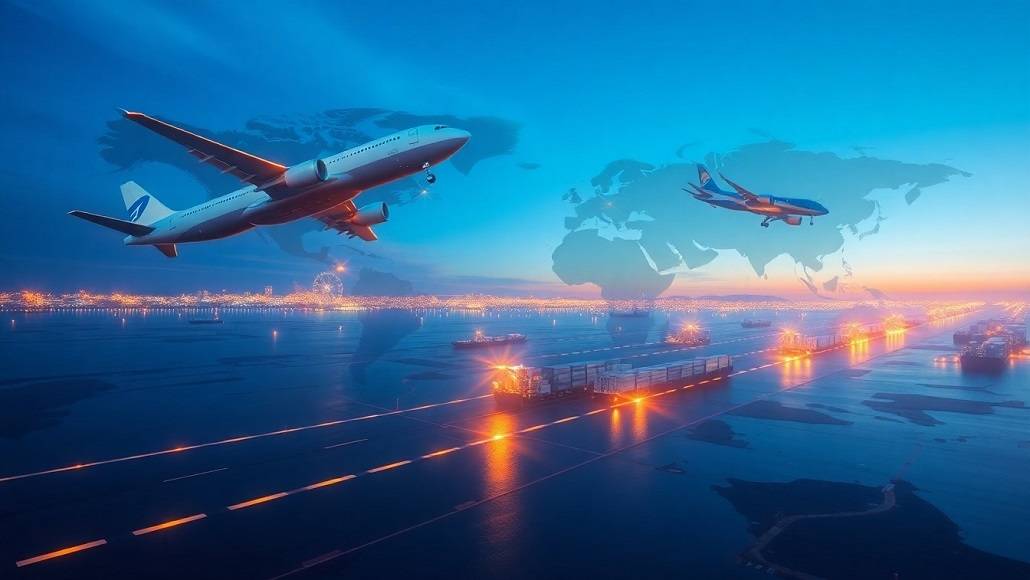There is no shred of doubt when we say that multimodal integration has gone on to become the cornerstone of modern logistics, helping the seamless connection between air, sea, and land transport across strategically designed mega-hubs. As global trade intensifies and the supply chains grow more intricate, these hubs happen to play a very critical role in terms of driving efficiency, decreasing the transit times, and also optimizing expenditure. By way of blending advanced infrastructure along with digital technologies, mega-hubs go on to create a very cohesive logistics spectrum, which helps with smooth cargo transfers throughout multi-transport modes. This kind of integration not just bolsters regional trade, but at the same time, it also positions mega-hubs as crucial nodes within the global supply chain, thereby shaping the future of commerce as well as connectivity.
Hong Kong – model in terms of integrated transport
Hong Kong stands as an incredible example of how a city can integrate air, sea, and land transportation successfully into a very seamless multimodal logistics ecosystem. As one of the most significant trading and logistics hubs across the world, Hong Kong demonstrates the crucial role in terms of integrated infrastructure when it comes to facilitating goods movement throughout numerous modes of transport.
- The geographic benefits as well as infrastructure energy
The geographic positioning of Hong Kong as a gateway to mainland China as well as the wider Asia Pacific region elevates its role as a focal point when it comes to multimodal transport. The interconnected infrastructure of the city exemplifies how proximity as well as planning can bolster efficiency in trade. Hong Kong International Airport—HKIA—has been consistently ranked among the busiest cargo hubs. And it works in tandem with the port of Hong Kong in order to create a flow of goods that is synergized. Apparently, the juxtaposition of one of the largest ports in the world with a highly efficient airport has helped Hong Kong to take care of a complex array of cargo transfers. Goods arriving at the port can get swiftly transferred to the air freight terminal, while the air cargo can get efficiently routed to the port in terms of maritime shipping. This kind of flexibility in cargo movement decreases transit times, enhances global trade competitiveness, and at the same time streamlines the logistics too.
- Advanced facilities along with integration of technology
What sets Hong Kong apart happens to be its focus on state-of-the-art facilities as well as technology, which enables real-time multimodal transport coordination. Automated cargo handling systems, AI-driven logistics platforms, and RFID-enabled tracking make sure of optimal freight distribution across air and sea networks. These technological upgrades happen to create a very transparent supply chain, thereby helping logistics operators to manage their cargo in a manner that is highly organized.
The efficiency that is achieved by way of multimodal integration also happens to benefit businesses that are looking forward to penetrating international markets. For example, time-sensitive cargo, such as perishables as well as electronics, can be moved by way of air as well as land connections. Whereas, on the other hand, bulk shipments can make the utmost advantage of sea links. This kind of scenario results in a dynamic logistics framework that caters to an array of industries.
Port and airport linkages across Asia
The rapid economic growth, as well as expanding trade volumes in Asia, has gone on to make port-airport linkages robust. By way of integrating these crucial nodes, countries throughout the regions are coming up with the ecosystem that enhances the connectivity, decreases any kind of functional costs, and also elevates the complete logistics efficiency.
- Growing importance of Asia in global trade
It is well to be noted that Asia happens to be home to some of the biggest ports as well as airports across the world, making port-airport links robust. It is a top priority for most economies across the region. Countries such as Singapore, China, and South Korea have been at the forefront of initiatives in order to develop intermodal systems that seamlessly connect maritime ports along with aviation hubs. This kind of connectivity helps with faster cargo transfers, catering to the rising demand when it comes to timely as well as efficient supply chain operations. For instance, Singapore has gone on to successfully establish Changi Airport as one of the extensions of its maritime port operations. By way of consolidated infrastructure, goods that enter the port can get directly transported to the airport for airfreight. These linkages help in shortening the cargo dwelling times and also make sure that shipments reach their destination with minimum to no delays. Apparently, the interconnected nature of such facilities also slashes transportation costs, thereby benefiting the businesses that operate in very highly competitive markets.
- Advantages of efficient port-airport connectivity
It is worth noting that port-airport connectivity not only speeds up the cargo movement, but it also diversifies the choices for businesses. There are many companies that make utmost use of these linkages in order to mix and match their transportation modes and optimize the costs and speed depending upon the kind of goods. Interestingly, logistics operators make full use of this flexibility in order to create personalized supply chain solutions, hence offering value-driven services to the clients. Moreover, these linkages happen to play a very crucial role when it comes to supply resilience. By way of enabling multimodal transfers, logistics systems can gain flexibility in order to adapt to disruptions like port congestion or even certain adverse conditions. For example, if cargo movement through the sea experiences delays, goods can very well be rerouted to airfreight so as to meet the critical deadlines.
| Benefit | Impact on Logistics |
| Enhanced Connectivity | Enables seamless cargo transfer across modes |
| Cost Optimization | Reduces transportation and handling costs |
| Improved Resilience | Ensures supply chain continuity despite disruptions |
| Faster Delivery Times | Facilitates real-time shipment adjustments to meet deadlines |
The integration when it comes to port as well as airport has gone on to become a cornerstone of logistics strategy in Asia. This underpins the region’s continuous dominance in the sphere of global trade.
Role of rail as well as smart roads within the terminal spectrum
While the ports as well as airports happen to form the foundation in terms of multimodal networks, the inclusion of railways along with smart roadways happens to complete the ecosystem by making sure of seamless inland connectivity. These elements are integral when it comes to linking terminals along with regional as well as domestic markets, therefore creating a very cohesive framework of logistics.
- Rail connectivity – the game changer
Rail transport has long been regarded for its capacity to handle large volumes of goods efficiently as well as sustainably. In the context of the mega-hubs, railways happen to act as a vital link that moves cargo from ports as well as airports to inland consumption centers. Countries such as Japan and China have gone on to invest heavily when it comes to rail freight corridors, which connect terminals with urban regions as well as industrial hubs.
The development when it comes to high-speed rail corridors has in a way further enhanced the rail transport role in the terminal spectrum. These corridors decrease the transit times in a significant way, thereby allowing the goods to get delivered to their final destinations much faster. Besides this, rail transport happens to be less affected by congestion by ensuring dependability when it comes to cargo movement.
Apart from the efficiency, railways also happen to contribute towards environmental sustainability by way of decreasing carbon emissions as compared to road transport. This happens to be in sync with the worldwide push when it comes to greener logistics solutions, thereby positioning the railways as a critical element in terms of future terminal networks.
- Smart roads – new frontier when it comes to connectivity
Smart roads go on to represent the next frontier when it comes to logistics innovation, making utmost use of digital technologies in order to facilitate advanced cargo transportation. It is worth noting that these roads are well equipped with sensors, automated traffic management solutions, and real-time tracking systems so as to make sure that they move in an efficient way between terminals as well as markets.
When it comes to terminal ecosystems, smart roads help with accurate coordination in terms of cargo movement. For instance, trucks that transport the goods from a port to a distribution center can be tracked in real time, thereby making sure that they stick to their optimized routes and avoid any sort of delays. The integration of autonomous vehicle technologies further helps to enhance this capability, therefore helping the development of truck platoons, which reduce fuel consumption along with functional costs.
| Aspect | Rail Connectivity | Smart Road Connectivity |
| Efficiency | Handles large volumes over long distances | Optimized for short-haul and regional freight |
| Sustainability | Low emissions per ton-mile | Offers fuel optimization through smart tech |
| Flexibility | Fixed routes and schedules | Highly adaptable to real-time conditions |
| Scalability | Ideal for bulk cargo | Perfect for high-value, time-sensitive goods |
Through integrating rail as well as smart connectivity, terminal ecosystems attain flexibility along with efficiency, which is required to meet diverse demands in cargo. These kinds of developments make sure that mega-hubs happen to remain at the cutting edge in terms of logistics innovation.
Conclusion
Integration within mega-hubs happens to represent the future of worldwide logistics by redefining how goods are getting transported by way of air, sea, as well as land. With instances such as Hong Kong that showcase the power of integrated transport, Asia is indeed leading the way when it comes to port-airport linkages as well as the rising role of rail along with smart roads in elevating connectivity. The logistics sector is entering an era of unmatched efficiency as well as adaptability.
These kinds of advancements not only decrease the functional complexities, but at the same time, they also contribute towards economic growth by helping with seamless trade across the regions. As technologies continue to evolve and infrastructure investments keep getting expanded, the concept in terms of multimodal integration is going to remain a major landmark of global commerce, hence, making sure that cargo flows seamlessly and also sustainably in a growing interconnected world.












